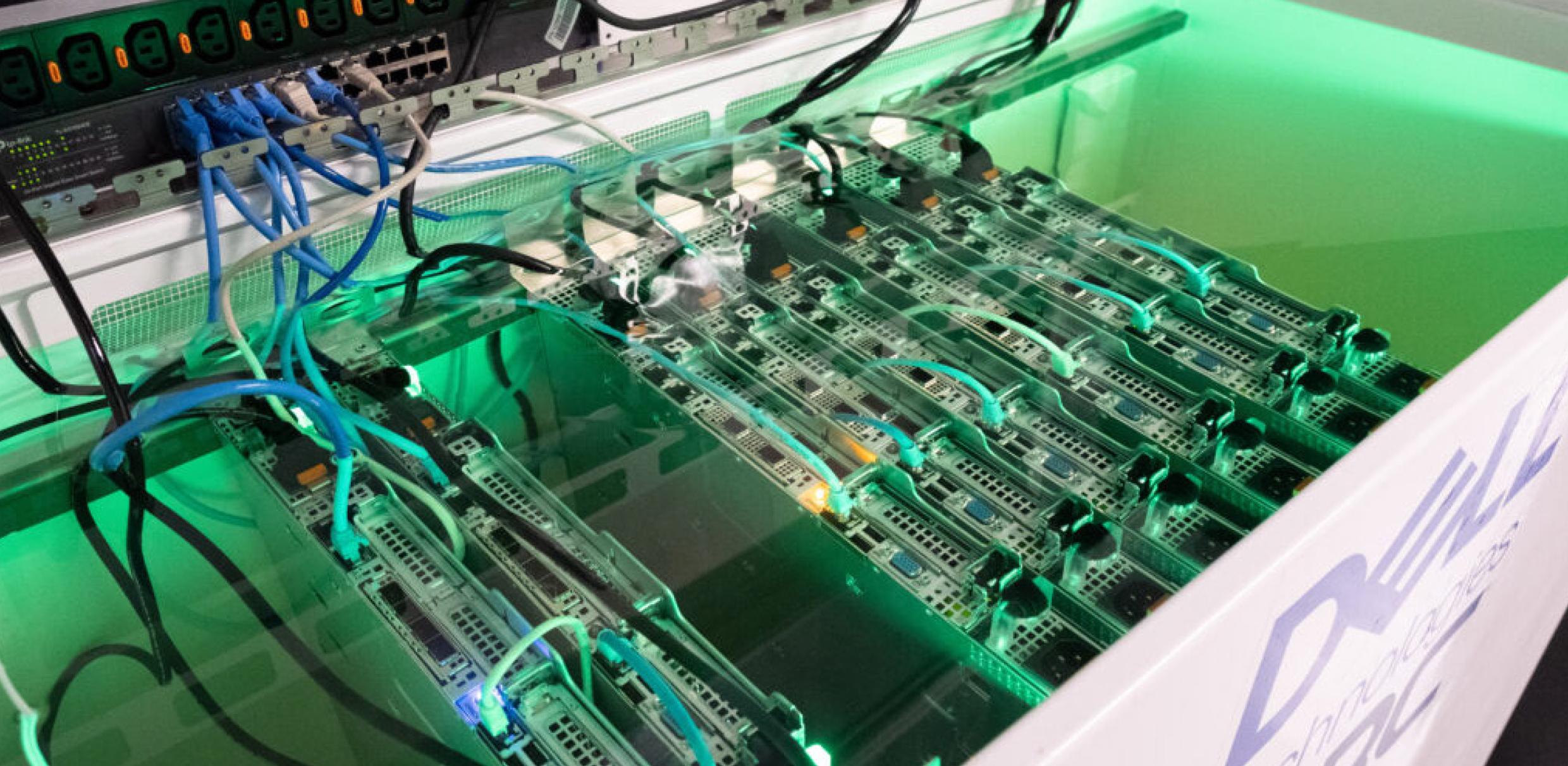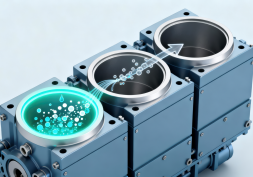Taking a byte out of data centre emissions
Follow CDE
PDF Download

A new testbed facility is launched at NUS to fast-track the testing and adoption of sustainable cooling technologies for data centres in tropical climates.
Data centres are the engines powering the digital age. Every time a photographer stores pictures in the cloud, an astrophysicist simulates the number of atoms in the observable universe, or a climate modeller forecasts the week’s weather, a data centre somewhere in the world springs into action, processing, analysing or tucking away vast amounts of data.
Such data centres are also notoriously power-hungry, consuming more electricity than entire countries. In 2020, global data centres consumed between 200–250 TWh, surpassing the power consumption of nations such as South Africa, Egypt and Argentina.
Much of that electricity — up to 40% of it — is dedicated to cooling the hardware that keeps data centres operational. As digital transformation permeates virtually every sector, coupled with the proliferation of energy-intensive applications such as generative artificial intelligence, the power consumption of data centres will only go in one direction. Projections suggest it could quadruple by 2030.
To address this challenge, the Sustainable Tropical Data Centre Testbed (STDCT) was launched at NUS on 29 November 2023 by Singapore’s Minister of State for Trade and Industry, Mr Alvin Tan.
Supported by the National Research Foundation (NRF) and various industry players, the programme is designed to fast-track the testing and adoption of sustainable cooling technologies for data centres in tropical climates, which aligns with the Research, Innovation and Enterprise (RIE) 2025 plan to position Singapore as a leading centre for green services and solutions to transform sustainable industries.

Tailored for hot and humid climates
Designed as a flexible, full-scale living laboratory, the STDCT is at the centre of a national-level research programme jointly led by NUS and Nanyang Technological University (NTU), Singapore, together with key stakeholders in Singapore’s data centre industry.
Spanning 770 m2, the testbed is the world’s first facility dedicated to developing innovative and high-efficiency cooling solutions and establishing new sustainability benchmarks for data centres in tropical climates.
This initiative is especially pertinent for hot and humid countries such as Singapore, where data centres currently account for 7% of the nation’s total electricity consumption, which is expected to nearly double by the end of the decade if it is business as usual.
“Conventional data centres rely on energy-intensive cooling systems, which are costly to run and have a significant environmental footprint,” says Associate Professor Lee Poh Seng from the College of Design and Engineering, NUS, who serves as the Programme Director of STDCT. “Our goal at STDCT is to achieve a 40% reduction in energy consumption and reduce water usage by 30 to 40% compared to typical data centres.”
These reductions will lower carbon dioxide emissions of data centres by approximately 40%, while achieving a Power Usage Effectiveness (PUE), a common metric used to describe the energy efficiency of a data centre, of less than 1.20 for a combination of air and liquid cooling. To put this in perspective, the global average PUE for data centres in 2022 was 1.50. Meanwhile, in the same year, the Singapore government set a PUE requirement of 1.30 for new data centres.
Collaboration at the heart
The STDCT programme has attracted more than S$30 million in investments for the facility and five research work packages led by researchers from NUS and NTU in collaboration with 20 industry partners, who have contributed state-of-the-art technologies and are actively engaged in technology co-development. Additionally, the programme also receives support from the Infocomm Media Development Authority.
Among the five research work packages, three are spearheaded by NUS researchers, focusing on the development of cutting-edge cooling technologies. One team is designing an immersion-cooled unibody heat sink for enhanced cooling performance. Another is working to raise the air supply temperature to the data hall, a method demonstrated in NUS’ testbed using air cooling and hot aisle containment, aligning with the latest industry standards for optimising data centre energy consumption in tropical climates. The data hall’s flexible layout further allows researchers to perform side-by-side performance comparisons between two cooling strategies.
Another team is pioneering the world’s first direct-chip hybrid cooling system. This system features a high-performance hybrid sink design that utilises both air and liquid cooling. Liquid, being a more effective heat transfer medium than air, can better manage heat from computer hardware such as CPUs and GPUs.
On the other hand, the potential of a novel dehumidification solution using a high-performance hygroscopic material is also being validated. It could significantly improve the indirect evaporative cooling efficiency of data centres, especially those living in hot and humid tropical climates.
“We look forward to validating alternative, sustainable cooling technologies under real-world conditions, with the aim of developing optimal guidelines for industry adoption,” says Assoc Prof Lee. “Our work will set new standards for greener data centre operation in the tropics, helping to ensure a more sustainable digital future in Singapore and beyond.”
Related
Lee Poh Seng ▏Associate Professor, Department of Mechanical Engineering ▏LinkedIn Profile
Related Departments
Read More
View Our Publications ▏Back to Forging New Frontiers - April 2024 Issue
If you are interested to connect with us, email us at cdenews@nus.edu.sg








